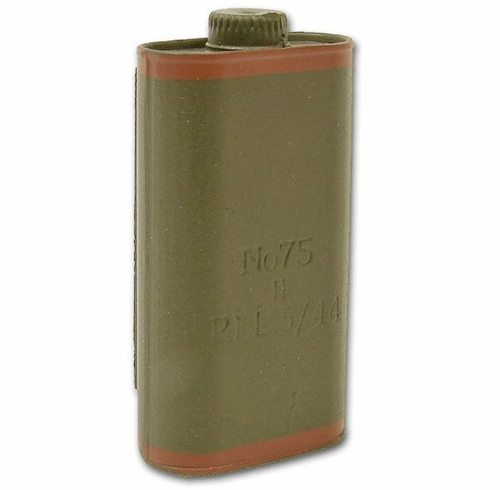No 75 Hawkins grenade
Histoire, fiche technique et photo

No 75 Hawkins grenade history
The need for anti-tank grenades became a priority for the British armed forces following the evacuation of Dunkirk. Indeed, many materials were abandoned on the continent by the Franco-British from May to June 1940 (including anti-tank weapons) and the threat of a German landing in England is becoming more and more pressing. A first grenade, No. 74 “Sticky bomb” is developed. The British engineers developed another anti-tank model, which they named No. 75 “Hawkins” and entered service in 1942.
This explosive can be used against tanks in three different ways: either as a grenade, as a mine, or as a demolition charge. In fact, the detonation is triggered by impact: the deformation created by the impact (after the launch of the grenade on a lens or when a vehicle rolls over) mixes two chemical components causing the explosion. It is also possible to insert inside the grenade a detonating cord and a slow drill, transforming this explosive into a demolition charge. It is also possible to add several charges in order to obtain a greater destruction effect.
The explosive No. 75 Hawkins was used throughout the Second World War and especially during the Battle of Normandy by the Commonwealth armies. It was in service with the British Army until 1955. The Americans also use the Hawkins grenade-mine, which they produced under the name M7 light anti-tank mine.
No 75 Hawkins grenade specification
Creator: Britain
Users: Commonwealth, United-States
Denomination: Grenade, hand, Anti-Tank No. 75
Type of grenade: anti-tank
Possible uses: mine, demolition charge (with an explosive cord and a slow fuse)
Detonation mecanism: the deformation of the structure mixes two chemical components which triggers the detonation (chemical detonator)
Filling: 450 grammes d’ammonal ou de TNT
Length: 150 mm
Width: 75 mm
Weight: 1,02 kg



